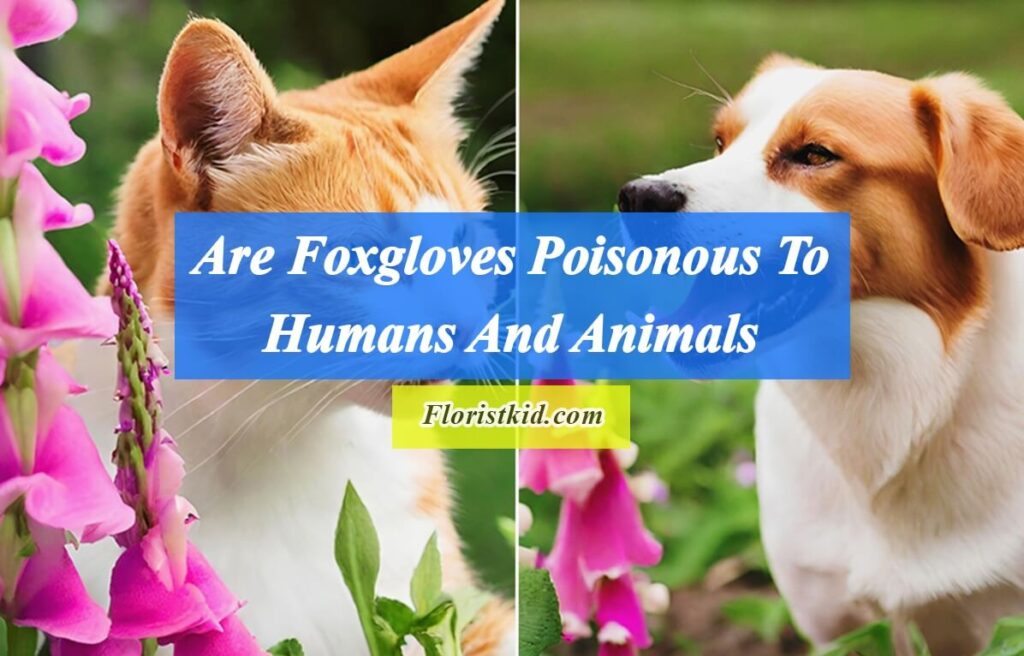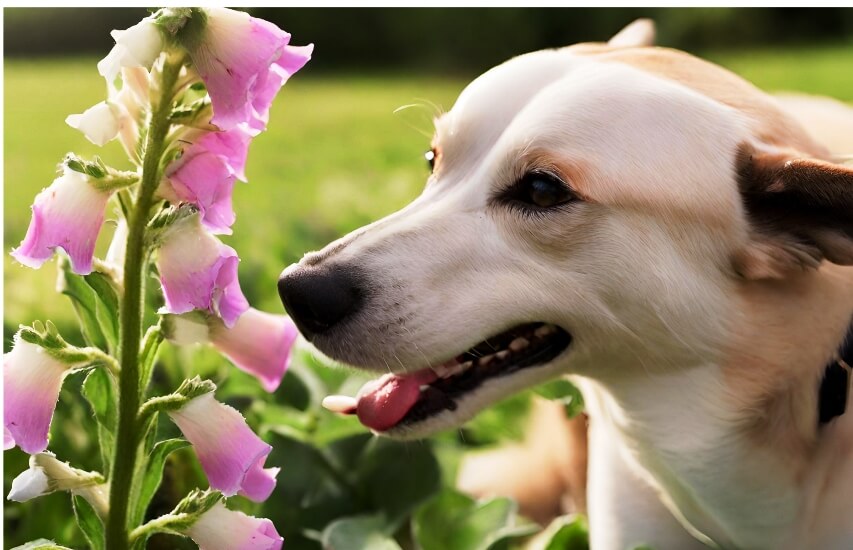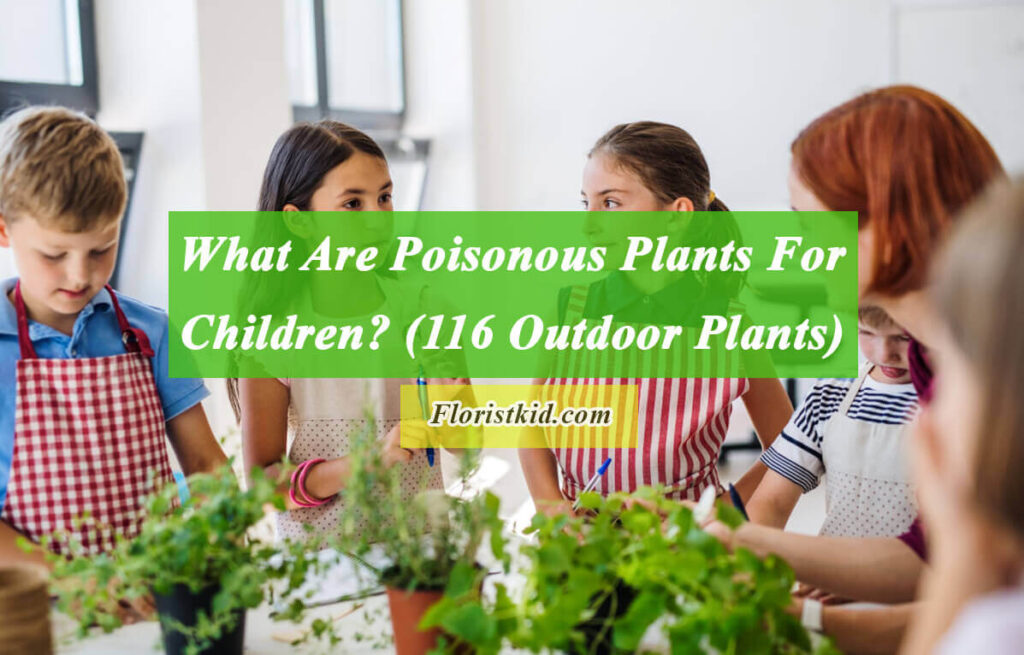Foxgloves (Digitalis purpurea) are striking wildflowers that grace gardens worldwide. However, hidden beneath their enticing beauty lies the potential for danger. Foxgloves contain powerful toxins that can pose serious risks to both humans and animals if ingested. In this article, we will explore the specifics of foxglove toxicity and the potential consequences of exposure.
Foxgloves are biennial plants characterized by their tall stems, bell-shaped flowers, and fuzzy leaves. They contain a mixture of cardiac glycosides, including digitalis, digitoxin, and digoxin. These compounds primarily affect the functioning of the heart and can be potentially life-threatening when consumed in sufficient quantities [1].
If you are interested in this topic, you can also read
<<Are Dahlias Poisonous? >> and <<Are Hostas Poisonous? >> articles.
Are Foxgloves Poisonous To Humans?
Yes, foxgloves are poisonous to humans. While foxgloves can be dangerous if ingested, their toxicity is relatively low if handled correctly. However, it is important to understand that even small amounts of exposure or ingestion can lead to severe health issues. Common symptoms of foxglove poisoning include nausea, vomiting, abdominal pain, and irregular heartbeat. In extreme cases, ingestion of large quantities may result in convulsions, coma, and even death [2].
Toxic Components Of Foxglove
Foxgloves contain chemical compounds known as cardiac glycosides, the most prominent being digitoxin and digoxin. These substances naturally occur in various parts of the plant, including the leaves, flowers, and seeds. Cardiac glycosides are potent cardiac stimulants that affect the heart’s rhythm and contractility. They act as positive inotropes, meaning they increase the strength and force of contractions, while also decreasing heart rate. When used carefully and under strict medical supervision, these compounds can be transformed into life-saving medications for various heart conditions [3].
Toxic Effects On The Heart
While cardiac glycosides derived from foxglove have been used for centuries in medicine to treat heart conditions like atrial fibrillation and congestive heart failure, self-administration or accidental ingestion can lead to severe complications. Ingesting even small amounts of foxglove can disturb the heart’s rhythm, leading to arrhythmias, palpitations, or, in extreme cases, cardiac arrest [4].
Symptoms Of Foxglove Toxicity
The symptoms of foxglove toxicity can vary depending on the quantity ingested and the individual’s sensitivity. Common signs include nausea, vomiting, irregular pulse, blurred vision, headache, dizziness, confusion, and excessive fatigue. In severe cases, foxglove poisoning can lead to seizures, loss of consciousness, and even death [5].
Dangers Of Ingestion Or External Exposure
It is important to remember that foxglove is not safe for consumption under any circumstances. Children are particularly vulnerable due to their small size and curiosity. Even the simple act of brushing against foxglove without skin protection can cause skin irritation, so it is advisable to use gloves when handling the plant.
Preventive Measures And Safety Precautions
To prevent foxglove-related poisoning incidents, consider the following safety precautions:
- Avoid Ingestion: Since foxgloves are poisonous if consumed, it is crucial to prevent accidental ingestion. If you have children, ensure they are educated about the dangers associated with these plants. Supervise individuals who might be at risk, especially those with cognitive impairments.
- Protective Clothing: When handling foxgloves, wear gloves and long sleeves to protect your skin from direct contact with the plant’s sap or pollen.
- Plant Location: Consider the placement of foxgloves in your garden. Ensure they are placed out of reach of children. Consider erecting physical barriers around them, or removing the plants altogether if there is an increased risk of exposure.
- Education and Awareness : Familiarize yourself with the appearance and characteristics of foxgloves to avoid accidental ingestion. Ensure all household members are aware of the potential dangers associated with foxglove and understand the importance of avoiding ingestion or unnecessary contact.
- Prompt Medical Attention: If ingestion or exposure to foxglove occurs, seek immediate medical assistance. Be prepared to provide information regarding the plant to aid in accurate diagnosis and treatment.
Are Foxgloves Poisonous To Cats?
Yes, foxgloves are poisonous to cats. Cats are curious creatures who often explore their surroundings, investigating plants both indoors and outdoors. As a cat owner, it is essential to be aware of the potential dangers posed by various plants that may be toxic to feline companions. One such plant that often raises concerns is the foxglove. Here, we will explore whether foxgloves are poisonous to cats and the potential risks associated with their ingestion.
Potential Risks To Cats
If a cat ingests any part of the foxglove plant, it can be at risk of various health complications due to the toxic nature of cardiac glycosides. While the severity of symptoms may vary depending on the cat’s size, overall health, and the amount ingested, it is essential to remain vigilant. Some potential risks associated with foxglove poisoning in cats include [6]:
- Cardiac Arrhythmias: Foxglove toxicity can disrupt the normal rhythm of a cat’s heart, leading to irregular heartbeats (arrhythmias). These abnormalities can range from mild to potentially fatal, causing symptoms such as rapid breathing, weakness, loss of coordination, and collapse.
- Gastrointestinal Distress: Ingesting foxgloves can irritate a cat’s digestive system, leading to symptoms such as vomiting, diarrhea, loss of appetite, and abdominal pain.
- Central Nervous System Issues: High doses of cardiac glycosides can affect a cat’s central nervous system, resulting in symptoms like confusion, disorientation, tremors, seizures, and even coma.
Preventing Foxglove Poisoning In Cats
To ensure the safety of your feline companion, it is important to prevent foxglove poisoning by taking the following precautions:
- Identify And Remove Foxgloves: If you have foxgloves in your vicinity, consider removing them or keeping them in a protected area where your cat cannot access them.
- Educate Yourself: Learn to identify foxgloves so that you can quickly recognize them and take necessary precautions.
- Outdoor Safety: Supervise your cat while it roams outdoors, ensuring it does not come into contact with foxglove plants growing nearby.
- Indoor Restrictions: If you keep indoor plants, ensure that foxgloves are not present in your home, as cats are known to nibble on various houseplants.
Are Foxgloves Poisonous To Dogs?
Yes, foxgloves are poisonous to dogs. In this section, we discuss the potential dangers foxgloves can present to our canine companions, symptoms of toxicity, and preventive measures to keep our four-legged friends safe [7].
Dangers Posed To Dogs
- Ingestion: Dogs are curious creatures known to explore their surroundings with their mouths. If a dog ingests foxglove plant parts, including flowers, leaves, or stems, there is a risk of toxicity.
- Toxic Effects: The cardiac glycosides found in foxgloves pose a threat to a dog’s cardiovascular system. Ingestion can lead to severe symptoms like irregular heart rhythm, arrhythmia, rapid heartbeat, seizures, vomiting, diarrhea, weakness, and even cardiac arrest in extreme cases.
Symptoms Of Foxglove Toxicity In Dogs
Identifying the signs of foxglove toxicity in dogs is crucial for timely intervention. Watch out for the following symptoms:
- Gastrointestinal Issues: Vomiting, diarrhea, and excessive drooling.
- Increased Heart Rate: Rapid, irregular, or abnormal heartbeats, which may be accompanied by fainting or collapse.
- Neurological Symptoms: Seizures, dilated pupils, staggering, weakness, or disorientation.
- Gastrointestinal Blockages: In some cases, plant material can cause obstructions, leading to additional complications.
Prevention And Treatment In Dogs
- Prevention: The best way to protect your dog from foxglove toxicity is to eliminate access to these plants. If you have foxgloves in your garden, consider fencing them off or removing them entirely.
- Veterinary Care: If you suspect that your dog has ingested foxglove plant material or experienced exposure, seek immediate veterinary attention even if symptoms are not present. A professional will perform a thorough examination, provide the necessary treatment, and monitor your dog’s condition closely.
- Inducing Vomiting: In some situations, the veterinarian may induce vomiting to remove any remaining toxic material from the dog’s system. However, this should only be done under the guidance of a professional.
Conclusion
While the allure of foxgloves may be hard to resist, it is essential to recognize the potential dangers they pose to humans and animals. The presence of potent cardiac glycosides within these delicate flowers demands caution and awareness. By understanding the risks, taking preventive measures, and seeking immediate medical attention in case of exposure, we can ensure the safety of both ourselves and our furry friends.












